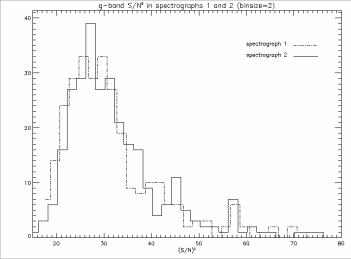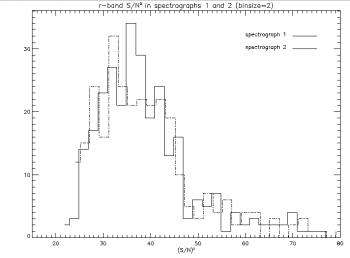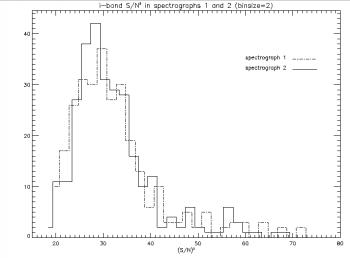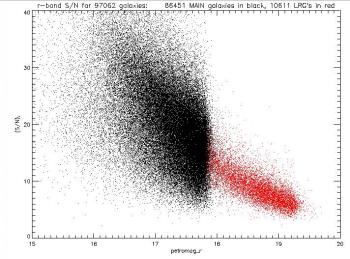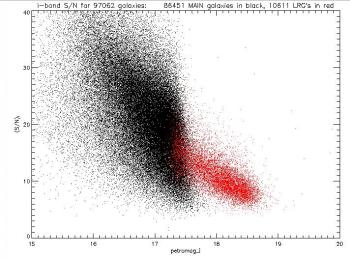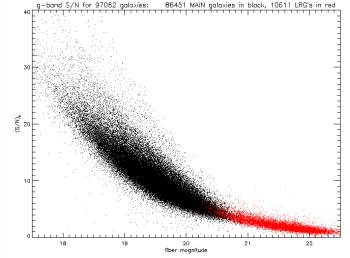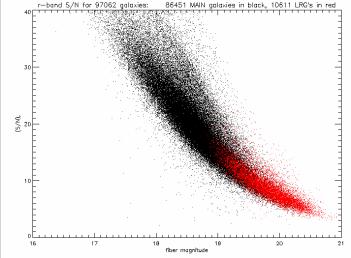Spectroscopic signal to noise of galaxy samples
Up: Spectra
Distribution of signal to noise in 291 DR1 plates
The SDSS uses two identical multi-object fiber
spectrographs. Below is a comparison of the two spectrographs in each of the
three bands that span the spectroscopes' range in wavelength.
The histograms show (S/N)2 in bins of 2. The data shown
below are for DR1 plates; DR2 looks very similar.
Signal to noise as a function of magnitude
Signal to noise in each of the three spectroscopic bands as a function of
petrosian magnitude in that band. Clicking on the image will enlarge it. Links
to contour histograms are under each plot. MAIN sample galaxies are in black and
LRG's are in red. The sharp cutoff in MAIN galaxies in the r-band is a result
of the magnitude limit placed on target galaxies. Note that all of the following
plots are of S/N and not (S/N)2.
Alternatively, one could ask how the signal-to-noise depends on the
fiber
magnitudes.
Last modified: Wed Mar 10 14:20:51 CST 2004
|


